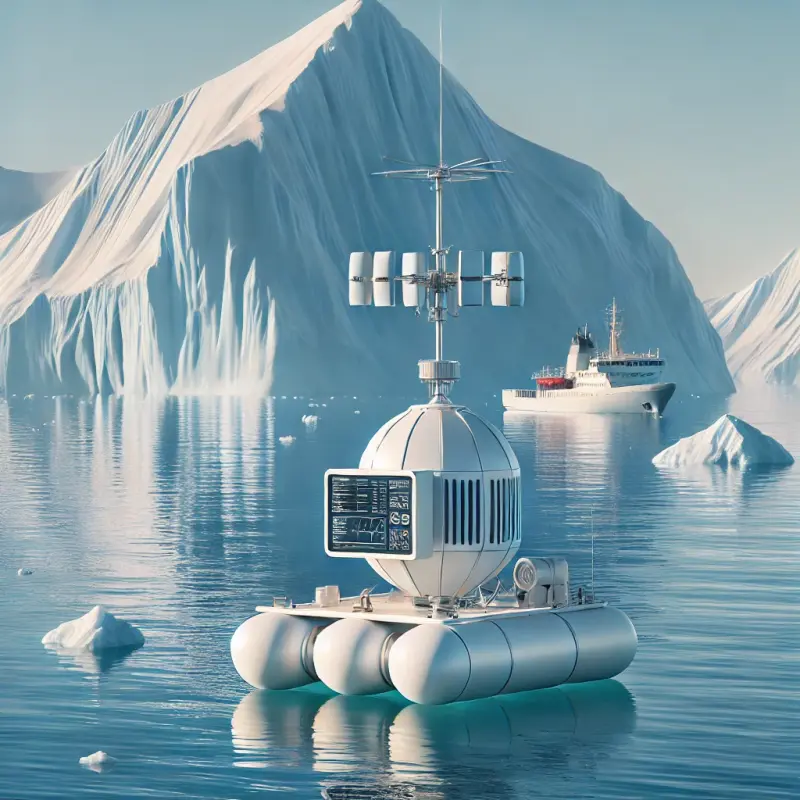The Hidden Giants: Icebergs and Their Role in Climate Science
Icebergs, often seen as silent wanderers of polar seas, hold a treasure trove of information about Earth's climate. These floating masses of ice, born from the calving of glaciers, are not just picturesque symbols of the polar regions. They are critical indicators of environmental change. Studying icebergs reveals invaluable insights into the dynamics of the cryosphere and the cascading effects of global warming. To unlock their secrets, scientists rely on advanced, often rare, technological devices. These tools are specifically designed to withstand the harsh and unpredictable conditions of polar environments while providing precise data.
The Challenges of Studying Icebergs
Investigating icebergs is no simple task. These massive ice formations are constantly on the move, influenced by ocean currents and winds. Their surfaces and interiors are highly variable, with layers formed over centuries containing air bubbles, impurities, and traces of ancient climates. Traditional methods of studying ice, such as direct sampling, are often impractical due to the dangers posed by iceberg instability and the extreme cold.
Modern technologies have made it possible to conduct detailed studies from a safe distance or under controlled conditions. The development of specialized equipment designed to probe icebergs from below, above, and even within, has revolutionized the field of cryospheric science. Below, we explore some of the rare and innovative devices currently used for iceberg research.
Advanced Buoys: Mobile Data Collectors
One of the most significant innovations in iceberg research is the deployment of advanced buoys equipped with state-of-the-art sensors. Unlike traditional stationary buoys, these devices are designed to attach to the surfaces of icebergs or drift alongside them. They collect data on temperature, salinity, and ocean currents in real-time.
Key Features:
- GPS Tracking: Enables scientists to monitor the movement of icebergs over time.
- Multi-Sensor Arrays: Measures a wide range of variables, including surface temperature, pH levels, and ice thickness.
- Energy Efficiency: Many of these buoys are powered by solar panels, ensuring long-term operation in remote locations.
These buoys are particularly effective in understanding iceberg melting rates and their interaction with ocean currents. By mapping their trajectories, scientists can also identify patterns that inform predictions about the future behavior of polar ice.
Underwater Robots: Exploring the Hidden Depths
Submersible autonomous vehicles (AUVs) have become indispensable in studying the submerged portions of icebergs, which constitute nearly 90% of their total mass. These robots are designed to navigate beneath icebergs and capture detailed 3D maps of their undersides.
Capabilities:
- Sonar Mapping: Provides high-resolution imagery of underwater ice structures.
- Temperature and Salinity Profiling: Collects data to understand the interaction between icebergs and surrounding water.
- Durability: Built to withstand extreme pressures and temperatures in polar waters.
By analyzing data from AUVs, researchers can better understand the stability of icebergs, the rate at which they melt, and the impact of this process on global sea levels.
Ice-Penetrating Radar: Unlocking Internal Structures
Ice-penetrating radar is a rare but powerful tool used to analyze the internal composition of icebergs. Mounted on aircraft or mobile platforms, this technology sends electromagnetic waves into the ice and measures the reflections to create a detailed map of its internal layers.
Applications:
- Layer Analysis: Helps scientists determine the age and composition of ice.
- Air Bubble Studies: Provides insights into historical atmospheric conditions.
- Structural Integrity: Identifies cracks or weaknesses that may lead to calving events.
This method has proven essential in understanding how icebergs respond to changing environmental conditions and their potential impact on oceanic ecosystems.
